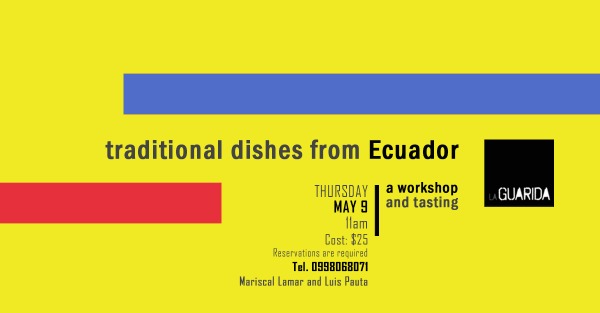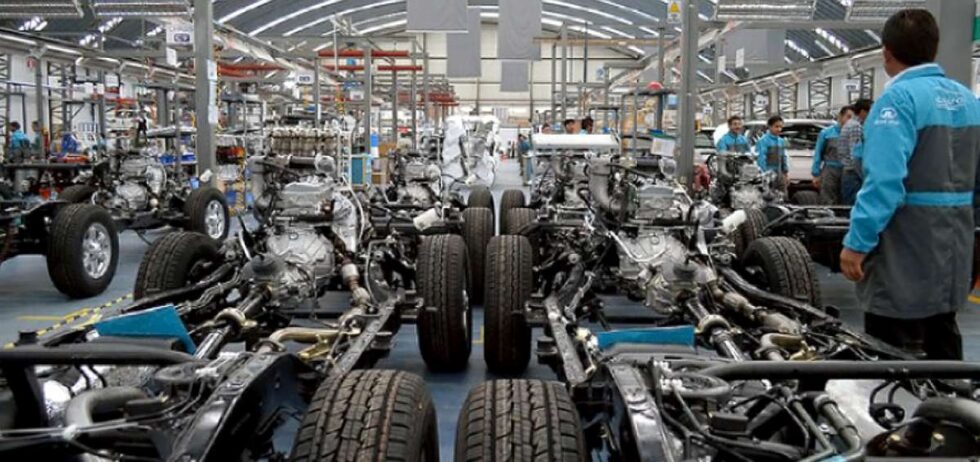Cuenca celebrates the popular arts and culture of Latin America –and the world– at the CIDAP museum

Artwork representing the heritage and culture of Ecuador and other countries is well represented.
By Stephen Vargha
Many people walk by one of Cuenca’s art treasures in El Centro and probably do not realize it.
“CIDAP was founded in 1975,” said Gabriela Vázquez, the Executive Director of Centro Interamericano De Artes Populares, otherwise known as CIDAP. “It started out with crafts and popular arts from the Americas, but now we have works from all over the world.”

CIDAP is located on Paseo 3 de Noviembre, near Puente Mariano Moreno.
CIDAP was created through an agreement between the government of Ecuador and the Organization of American States (OAS). It is overseen by Ecuador’s Ministry of Economy and Finance, which covers the monthly expenses.
“There were many places in central and South America that wanted the CIDAP headquarters,” said Vázquez. “Cuenca got it because the city is close to the arts. It was the culture of the city that convinced OAS that the museum headquarters needed to be here.”
It is housed in a beautiful building that was constructed between 1945 and 1952. Gonzalo Cordero Crespo, a prominent politician, and his wife, Filomena Borrero Vega, built and owned the building.
According to Vázquez, the building, which is located on Paseo 3 de Noviembre, was used for offices for the military. She said the Ecuadorian military had a facility at that time on the other side of the Tomebamba River.

The artwork on the first floor is totally dedicated to works by women.
Cordero Crespo hired a Spanish architect to design the carved and polished stone building. The architecture and old wooden floors are worth the visit, but Vázquez said there is a lot more.
“We are told that CIDAP is like home for the artists,” said Vázquez. “People come here for courses and seminars that are free to everyone.”
Of course, many come for the art collections on two floors. The first floor is entirely dedicated to women artists while the second floor is a museum and a store at the same time.
“Everything on the middle floor is for sale,” said Vázquez. “CIDAP has one of the largest collections of popular art in all of South America.”

Artwork from Latin America is greatly represented, including this textile mask from Colombia.
That includes ceramics from Cuenca, baskets, purses, and containers made from vegetable fibers from Comunidad Chachi, in Esmeralda province. Gorgeous textiles with vibrant colors are on display on the second floor, too.
There is also a documentary center with 50,000 to 60,000 pieces of information concerning the arts.
Vázquez has been leading CIDAP for almost two years. She grew up in a Cuencano family of artists. “My great-grandfather was a poet, and my grandfather was a painter,” said Vázquez.

A two-piece work of art by a female artist is prominently displayed at CIDAP.
Besides her lineage, Vázquez has an impressive background. Prior to her current job, she was a lecturer at the National University of Education, in Chuquipata Centro, and the director of Cuenca’s Municipal Museum of Modern Art.
She got her master’s degree from Newcastle University, in the northeast of England. During her time there, Vázquez worked in the Collections Information Department at Buckingham Palace.
“I worked on the collection on behalf of the nation as well as the royal family’s private holdings,” said Vázquez. “Some of those holdings are on display to the public.”
Vázquez and CIDAP are already working on this year’s FAAM — Festival de Artesanías de América. Known as the Festival of Crafts of America, Cuenca becomes the epicenter of craft events in the Americas at the beginning of each November.

Colorful and vibrant textile artwork is found throughout CIDAP.
“That is the crown of our work,” said Vázquez. “Last year we received 300 postulations to be part of FAAM.”
To be part of the prestigious international arts festival, an artist submits a postulation which consists of an application form, photos of their work, and a piece of their artwork. The deadline for submitting the application is the end of May.
“We invite an external jury of three people,” said Vázquez. “The external jury is to show transparency. We are not playing favorites as we want it to be very fair.”
Every artist receives feedback from the CIDAP jury for their applications. Encouraging suggestions by the jury are sent back to the artist to help them grow, with the hopes they can be part of a future FAAM.

Gabriela Vázquez is the Executive Director of Centro Interamericano De Artes Populares, otherwise known as CIDAP.
More than 180 artisans from Argentina, Bolivia, Brazil, Chile, Colombia, El Salvador, Guatemala, Honduras, India, Mexico, Peru, and Ecuador were part of the 2022 FAAM. Besides the highly talented artists, FAAM includes live demonstrations of craft production, musical shows, dance, and theater.
“We are very committed to the arts community,” said Vázquez. “CIDAP divides the rest of the year for artisan workshops and seminars.”
It is not limited to Cuenca and the surrounding cantons. “We go to different provinces to analyze their works and come up with educational programs for them,” said Vázquez. “This year we will be working in Morona-Santiago and Azuay provinces.”

A wall in the offices of CIDAP shows many of the countries represented at the museum.
CIDAP is currently working with women artists from Dos Mangas, located 15 minutes from Montañita, in Santa Elena province. Vázquez said they are famous for their traditional weaving of the Ecuadorian toquilla straw hat. Their talents have influenced CIDAP.
“We just launched a new course for working with natural fibers, including weaving techniques,” said Vázquez. “The course started March 13 and goes through March 25 for 20 participants from Ecuador, one from Colombia, Mexico, and Venezuela.”

The stunning blue mask from Ecuador is called, “The Spirit of the Hummingbird.”
There are a total of 25 participants who have scholarships from CIDAP. The participants bring their own materials for the course, but CIDAP covers the course fees, transportation to Cuenca, and food. Vázquez said each scholarship is worth about $2,000.
In honor of International Women’s Day (March 8), a new exhibition opened on March 13: Women – Powerful Voices in Crafts. “It is a celebration and commemoration for Women’s Day,” said Vázquez.
All of this goes back to Cuenca’s love of the arts. “It comes from generations of artists. The school of painting was developed in Cuenca,” said Vázquez. “High society people would travel to France. Many went to Paris to study the arts. They fell in love with the culture of France and brought it back to Cuenca.”
Vázquez can understand why Cuenca has been called the “Arts Capital of Ecuador” and has been recognized as a cultural center in all of Latin America. “Arts have always been here because of the love of everything French,” said Vázquez. “People in Cuenca enjoy music and paintings.”
When told humanities education is imperiled and greatly undervalued in the United States, Vázquez was shocked and surprised. “Children are important. They need to understand our culture and heritage,” said Vázquez. “So, we try to teach them the importance with programs on Saturdays, and we have something that is similar to summer camps.”
She feels that embracing the arts and culture goes beyond children. It may be why CIDAP is greatly appreciated and loved by many adults.
____________________
CIDAP, Paseo 3 de Noviembre, Cuenca, 7-282-9451, https://www.cidap.gob.ec/, Hours: Monday-Friday, 8 a.m. to 5 p.m., Admission: Free
Photos by Stephen Vargha
Stephen Vargha’s new book about Cuenca, “Una Nueva Vida – A New Life” is available at Amazon in digital and paperback formats. His blog, “Becoming Cuenca,” supplements his book with the latest information.


















